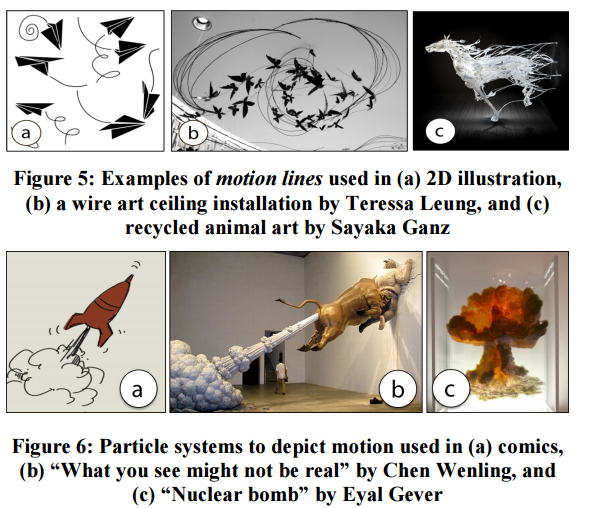 Despite all its wonder and magic, 3D technology so far has only allowed us to produce models in static form. And while often our prints may be part of a larger moving mechanism later—even a vehicle, plane, or rocket—we generally are not able to indicate movement or any sort of progression within one piece. From an art and design standpoint, that presented a challenge for many interested in areas such as animation, gaming, and more, so Autodesk Research began working on a solution that would allow us all to express motion with our 3D models.
Despite all its wonder and magic, 3D technology so far has only allowed us to produce models in static form. And while often our prints may be part of a larger moving mechanism later—even a vehicle, plane, or rocket—we generally are not able to indicate movement or any sort of progression within one piece. From an art and design standpoint, that presented a challenge for many interested in areas such as animation, gaming, and more, so Autodesk Research began working on a solution that would allow us all to express motion with our 3D models.
Researchers came up with a new modeling tool that allows designers to fabricate motion sculptures. Think of superheroes in motion, a bull pawing in the dirt, runners sprinting to the finish line, or dancers twirling. ChronoFab allows you to depict both movement and the passing of time within that using:
- Motion lines – also known as ‘speed lines,’ motion lines are often used in comics and other illustrations to show how an object is moving. Artists sculpt geometry along this trajectory.
- Multiple stroboscopic stamps – these are used to demonstrate complex motion that’s happening in a short period of time. This effect uses ‘discrete, static, slightly different 3D stamps of an object.’ This technique is also recommended for preserving high resolution and quality in the model while still showing motion.
- Sweeps – these effects are commonly used in comics, offering shapes ‘by sampling numerous instances of a 2D curve attached to the surface of an object over a range of time.’ A parallel in a 2D design would be the typical long blur indicating movement.
- Particle systems – this is when other elements are used to indicated movement, such as fluid effects trailing behind characters or objects, or smoke behind a vehicle indicating travel. Horses, bikes, and rockets are examples that the developers indicate as common examples.
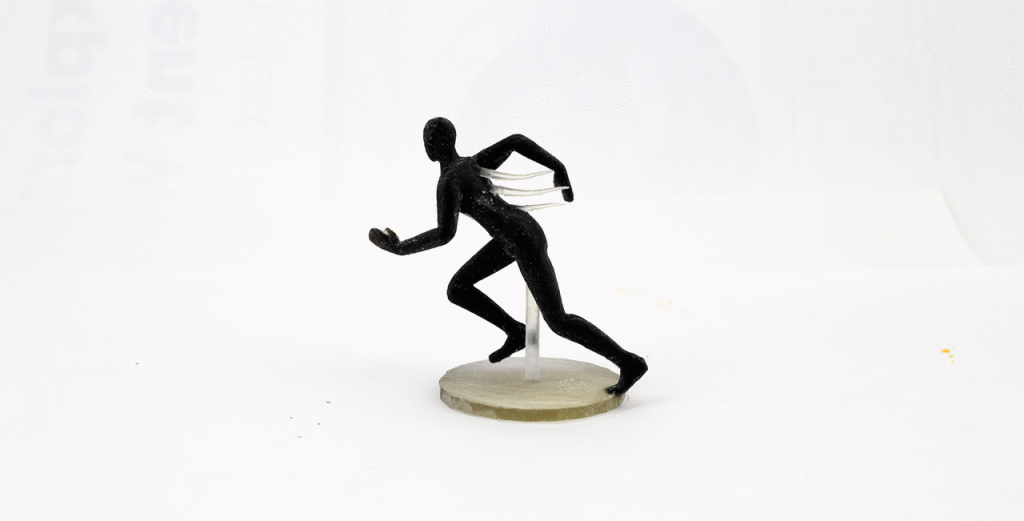 The developers, in making this new 3D modeling tool, were concerned with how to allow users to imbue a sense of both movement and time in printed objects, as well as asking them what the point would be in doing so in terms of art and design, and interaction. The resulting ChronoFab works with a genre like animation, for example, because it allows for an object to depict movement as it throws something. The goal is ‘to visualize an object’s motion with static, transient, ephemeral visuals that are left behind.’
The developers, in making this new 3D modeling tool, were concerned with how to allow users to imbue a sense of both movement and time in printed objects, as well as asking them what the point would be in doing so in terms of art and design, and interaction. The resulting ChronoFab works with a genre like animation, for example, because it allows for an object to depict movement as it throws something. The goal is ‘to visualize an object’s motion with static, transient, ephemeral visuals that are left behind.’
Comic art definitely played a big part in the inspiration of ChronoFab, as the developers at Autodesk looked to that genre, working to allow designers to use 3D animated objects as their input and then stylize different ways of showing motion. They see this as a way to close the gap between animation and 3D printing, and also expect that the modeling tool will expand into further applications.
The team of developers at Autodesk, to include Rubaiat Habib, Tovi Grossman, Cory Mogk, Ryan Schmidt, and George Fitzmaurice, will be presenting their paper on this new work, ‘ChronoFab: Fabricating Motion,’at the ACM Conference on Human Factors in Computing Systems (CHI 2016) being held in San Jose, California from May 7-12 .
In the paper and presentation, they will discuss how the tool is used for dynamic sculpting, meant to show how a 3D object deforms with the progression of time. The developers also foresee the possibility of an entire range of modeling tools to accompany ChronoFab, beyond what we see now, allowing designers to explore even further with motion data.
“…our work aims to generate motion effects that can be fabricated and viewed from all angles, imposing very different requirements. Furthermore, we provide an interface that enables users to explore a variety of stylized motion effects, without requiring expertise in 3D animation, sculpting or scripting,” state the researchers in their paper, also pointing out that effectiveness does still rely on the skill level of the artist.
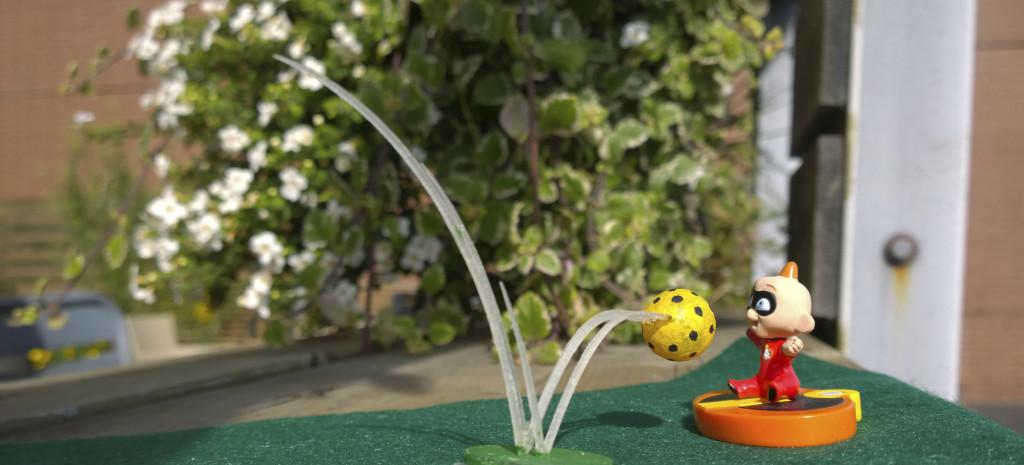 With the tools at hand, currently, in ChronoFab, artists and designers have a new way to exploit data from the following:
With the tools at hand, currently, in ChronoFab, artists and designers have a new way to exploit data from the following:
- Motion capture systems
- Simulation methods
- Procedural methods
- Manually crafted character animations
In allowing for the integration of this type of data into modeling environments, the developers see the potential for much greater, dynamic framework in the initial design stages, offering inspiration for designers just beginning to create a specific form. The developers, in their paper, describe how an example such as a flying moth animation could be behind the inspiration for a lamp design, or a character animation can inspire a jewelry design.
They also see this use of temporal information as valuable to generative design, where more complicated geometries can be made with only a small amount of data, which the developers state is made up of items such as rules, codes, and parameters. This means that ‘generative designers’ can basically write the code to make these more complex forms using motion data. Numerous tools can be implemented in the design process to make innovative, more complicated designs.
With ChronoFab, users and those appreciating art and design have enhanced physical visualization, employing time-varying data to show motion. This is a new and expansive form of expression which also allows designers to work quickly in crafting their work.
The team performed a study with users to compare ease of use and quality for designers in creating motion sculptures. Participants were both professionals and amateurs, and all involved agreed to be part of a comparative study which allowed the creators of ChronoFab to find out more via real users, and to delve further into the true level of functionality, expanded creativity, and limitations too, of the new product.
Six participants were selected for the study, with a median age of 34. Half were experts, and half amateurs who did have at least a passing knowledge of 3D modeling. In short sessions, around an hour or so, each participant was given a brief overview and walked through a series of tasks using ChronoFab. While they did experience a mild learning curve for some aspects of modeling, users found ChronoFab to be easier, faster, and offer better results than with traditional tools.
“In a set of professional and non-professional usage sessions, ChronoFab was found to be a superior tool for the authoring of motion sculptures, compared to traditional 3D modeling workflows, reducing task completion times by 79%,” state the developers in their paper.
ChronoFab not only offers a new world of options for the designer in terms of fabricating objects, but it may also spark enthusiasm in many new users who have not yet tried 3D printing. For those involved in animation and gaming, the power to give so much more life to characters should prove to be quite enticing, and even more entertaining for those of us appreciating their work. Is this a tool you need? Discuss in the ChronoFab 3D Modeling forum over at 3DPB.com.
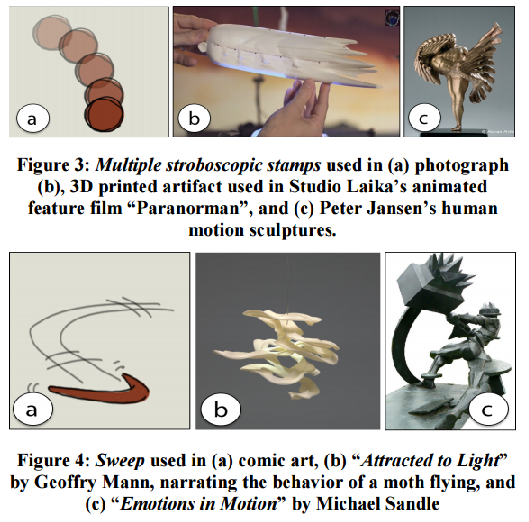
Subscribe to Our Email Newsletter
Stay up-to-date on all the latest news from the 3D printing industry and receive information and offers from third party vendors.
Print Services
Upload your 3D Models and get them printed quickly and efficiently.
You May Also Like
Making 3D Printing Personal: How Faraz Faruqi Is Rethinking Digital Design at MIT CSAIL
What if your 3D printer could think more like an intelligent assistant, able to reason through a design idea, ask questions, and deliver something that works exactly the way the...
Reinventing Reindustrialization: Why NAVWAR Project Manager Spencer Koroly Invented a Made-in-America 3D Printer
It has become virtually impossible to regularly follow additive manufacturing (AM) industry news and not stumble across the term “defense industrial base” (DIB), a concept encompassing all the many diverse...
Heating Up: 3D Systems’ Scott Green Discusses 3D Printing’s Potential in the Data Center Industry
The relentless rise of NVIDIA, the steadily increasing pledges of major private and public investments in national infrastructure projects around the world, and the general cultural obsession with AI have...
Formlabs Teams Up with DMG MORI in Japan
In late June, Nick Graham, Chief Revenue Officer at Formlabs, announced on LinkedIn that the company had partnered with DMG MORI, one of the world’s leading machine tool companies, to...


